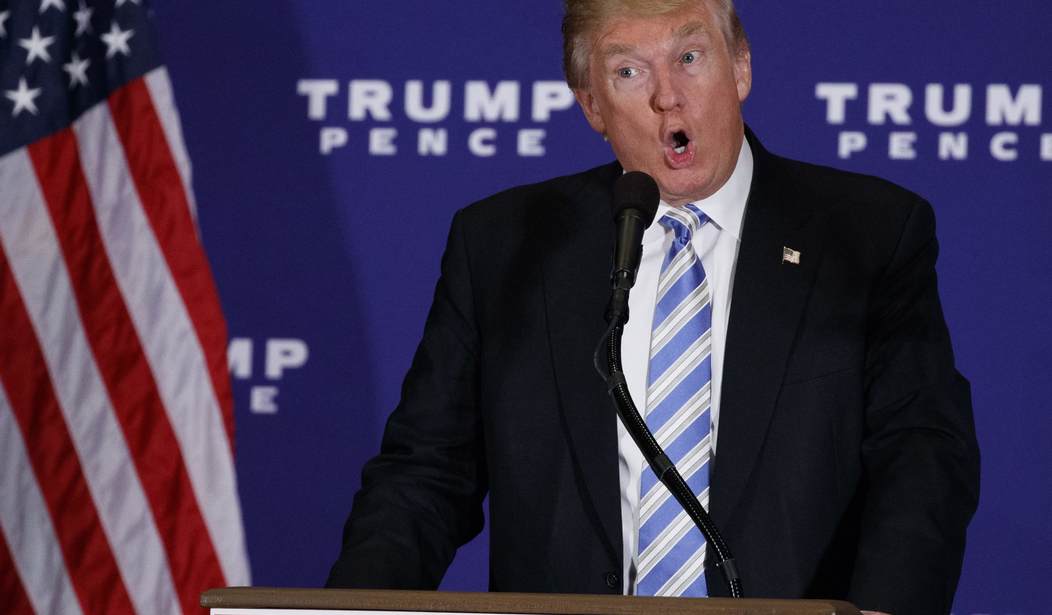Let me make a bold statement: There is a reasonable chance that Hillary Clinton would not have won under a “popular vote” system, even though it seems clear that she currently has about two million more votes than President-elect Donald Trump. That’s because the “popular vote” the media keeps talking about is not representative of what the popular vote would actually look like without the Electoral College. In fact, I believe that the Electoral College is actually skewing the “popular vote” in favor of Democrats.
My belief that Trump would have received more votes under a true popular vote scenario comes as the result of comparing two states: California and Ohio. California has the single biggest bloc of voters in the United States by a very wide margin. According to the Los Angeles Times, there are more registered voters in California than the population of 46 other states. So the California vote would have a major impact on the outcome of the popular vote in a popular vote scenario. We also have Ohio, a critical swing state for the Electoral College. Presidential candidates currently campaign hard in Ohio, as the population is nearly evenly split in their political preferences and their electoral votes often push a candidate over the top. With California and Ohio as measuring sticks, let us look at some of the hard numbers.
There are 8,029,130 registered Democrats versus 4,888,771 registered Republicans in the Golden State, according to the secretary of state of California. As a percentage of eligible voters, that comes out to 44.8% to 27.3% respectively, a difference of 17.5%. However, Clinton won the state by 28.3%, a very significant difference from voter registration.
This discrepancy in voter registration versus actual voter turnout would suggest that there were many Republicans who simply did not turn out to vote. And they had good reason to skip Election Day. Under the Electoral College system, if you are a Republican in California, why bother to vote? California’s 55 electoral votes are going blue whether or not you cast a ballot.
The Democrat turnout, however, will still be high, even if the assumption is that their candidate will win. Why? One reason is that people want to support a perceived winner rather than an expected loser. The difference in registration and turnout percentages seems to show that in a true popular vote scenario, Trump would have, at minimum, gained hundreds of thousands of extra votes from California.
When we bring Ohio into the mix, the data start to really tell the story of how the popular vote is skewed by the Electoral College system.
Ohio provides some good data points for comparison. First, let’s talk about the number of raw votes in Ohio. In the Electoral College system we have today, Ohio gets a lot of attention. Presidential campaigns focus on Ohio, as compared to California, which has a much larger voter base. In fact, the difference in sheer voter numbers is so large that Trump actually got fewer votes in Ohio (where he won by 10%) than in California. In a true popular vote system, the Republicans would do a better job of campaigning and getting out the vote in California versus Ohio.
I can actually use real data from within the state of Ohio to show that densely populated Democratic-voting areas (like California) are actually great sources of sheer voter numbers for Republicans.
In Ohio, the tried and true Democrat county strongholds are Franklin (Columbus), Cuyahoga (Cleveland), and Hamilton (Cincinnati). In fact, Franklin and Cuyahoga were the only two counties in Ohio that Clinton won by more than 60%. The three counties that gave Trump the most votes in terms of sheer numbers are, in order, Franklin, Cuyahoga, and Hamilton. About 20% of Trump’s votes for the state of Ohio came from just those three counties (there are 88 counties in Ohio). If Ohio had an Electoral College-type system based on counties rather than total votes, those three counties (that were important for Trump) would have received little to no attention. Republicans in those counties would be have been less motivated to turn out to vote, just like they were in California.
Finally, let’s look at the actual voter turnout. As a percentage of the voting-eligible population, turnout in Trump states was as follows: 64.5% in Ohio, 55.4% in California, 61.4% in Pennsylvania, 64.9% in North Carolina, and 65.6% in Michigan. Those numbers compare to the solid Democrat states of New York with 52.4% and Hawaii with 42.5%. (All data from http://www.electproject.org/2016g). As a baseline, the national average was 55.4% (CNN).
I think it is very difficult, if not impossible, to suggest that the popular vote that Hillary Clinton won under the Electoral College system is the number she would have won under an official popular vote system because the “popular vote” number the media keeps talking about is nowhere near a “true” popular vote. I am not going to claim that the Electoral College is the best or most appropriate system for choosing the president of the United States. What I am claiming is that the Electoral College causes a change in voter turnout—and those changes in turnout seem to favor the Democrats. In other words, there is a reasonable chance that Hillary Clinton would not have won the popular vote if there were no Electoral College system.









Join the conversation as a VIP Member